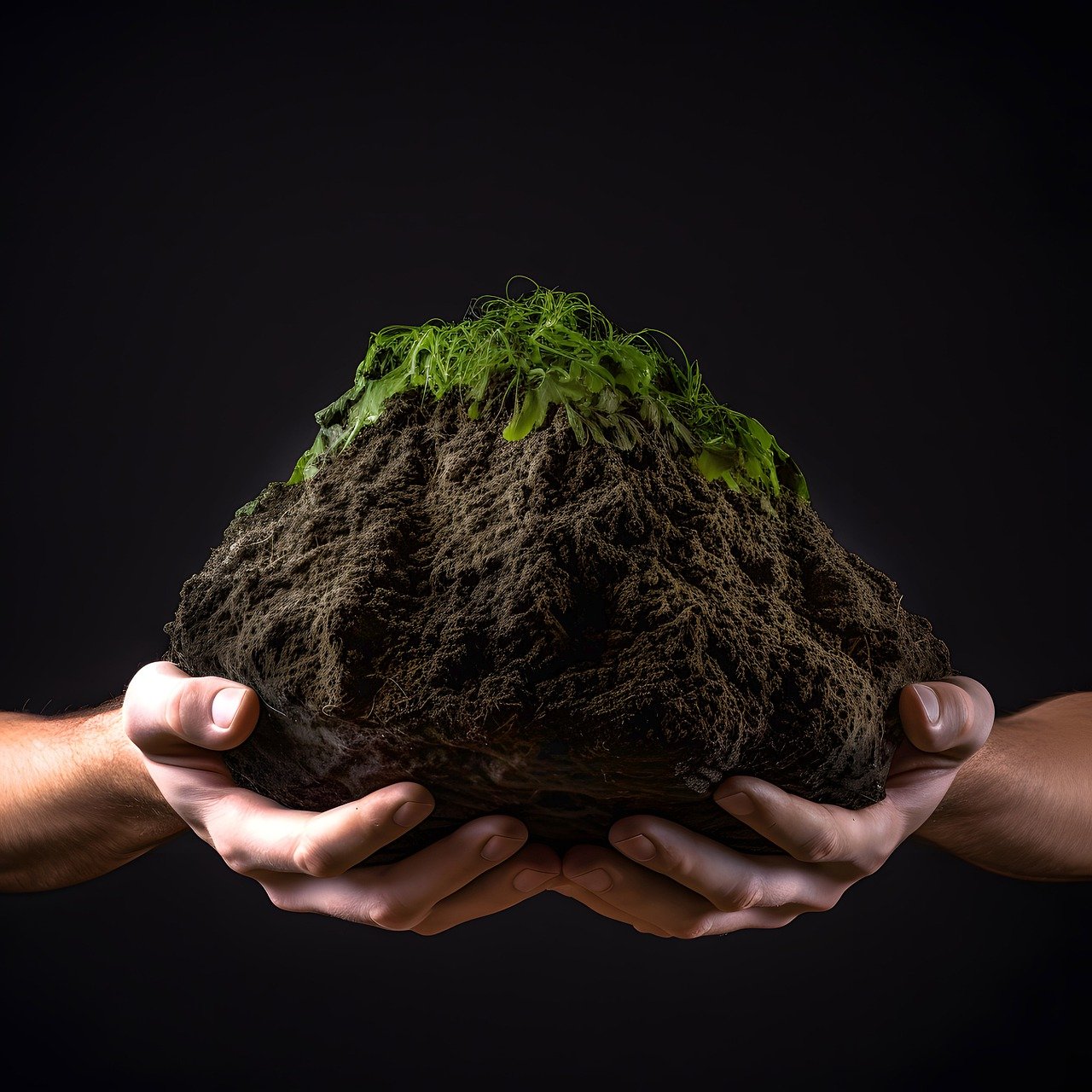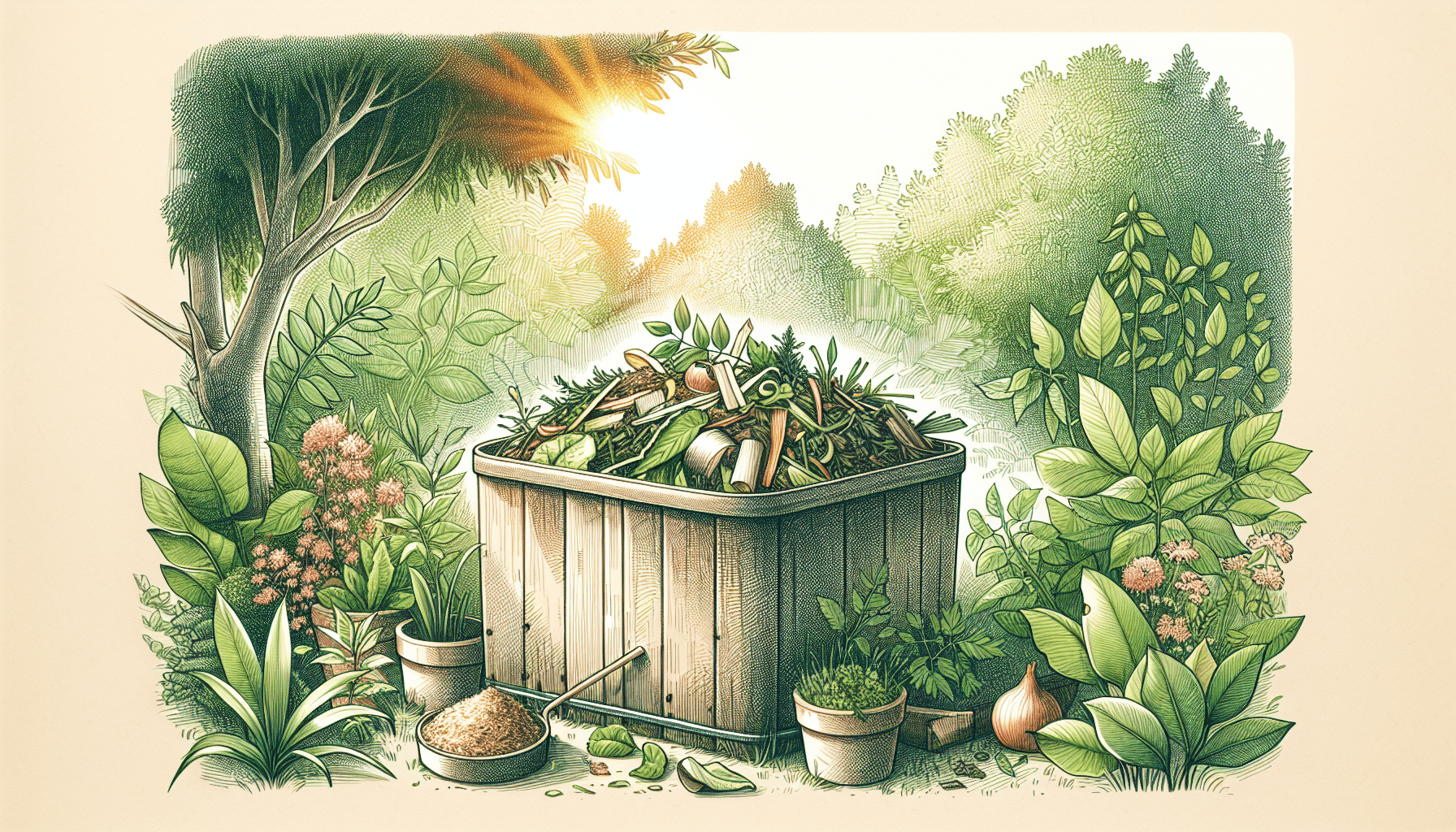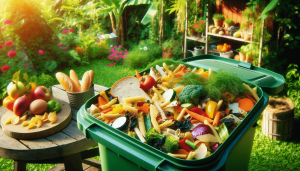Welcome, fellow garden enthusiasts! At some point, we’ve all wondered about the composting potential of sawdust. The good news is, yes, we can compost sawdust! Sawdust can be a valuable addition to our compost piles as long as we follow a few simple steps. By balancing it with ample green material and ensuring proper aeration, we can turn our sawdust into rich, fertile compost to nourish our gardens. Let’s embrace this exciting addition to our composting journey and transform those wood shavings into garden gold! Have you ever found yourself knee-deep in a woodworking project, looking at a burgeoning pile of sawdust, and wondered, “Can I compost this?” Well, you’re not alone. Many of us who are into DIY carpentry or simply enjoy the occasional home improvement project have faced this dilemma. It’s a question worth exploring, especially if we’re keen to practice eco-friendly habits and reduce waste. So, let’s dive right in and break down everything about composting sawdust.

Understanding Composting
Before we delve into composting sawdust, it’s crucial to grasp the basics of composting itself. Composting is a natural process where organic materials decompose, resulting in nutrient-rich humus. This humus can fertilize our gardens, improve soil structure, and promote microbial life.
The Science of Composting
Composting requires four primary elements: carbon, nitrogen, moisture, and oxygen. Carbon (browns) provides energy, while nitrogen (greens) supports growth and reproduction of microorganisms. Moisture helps in the decomposition process, and oxygen is essential for aerobic decomposition.
| Element | Common Sources | Role in Composting |
|---|---|---|
| Carbon | Dry leaves, straw, cardboard, sawdust | Provides energy for microorganisms |
| Nitrogen | Grass clippings, food scraps, manure | Supports microorganism growth |
| Moisture | Water, wet compostable materials | Facilitates decomposition |
| Oxygen | Air (turned compost piles) | Essential for aerobic organisms |
Getting the balance right is key to successful composting. Generally, a Carbon to Nitrogen (C:N) ratio of about 30:1 is ideal. Too much carbon will slow down the process, while too much nitrogen can result in a smelly compost pile.
Sawdust in Composting
Now, let’s get back to our initial question about sawdust. Sawdust, derived from wood, is primarily a carbonaceous material. This makes it a valuable addition to our compost pile, provided we manage it correctly.
Benefits of Sawdust in Composting
Incorporating sawdust into our compost has several advantages:
- Carbon Source: As mentioned, sawdust is rich in carbon, which balances the nitrogen-heavy ‘greens’ like food scraps and grass clippings.
- Structure Improvement: Sawdust helps improve the aeration and structure of the compost, preventing compaction and promoting airflow.
- Moisture Regulation: It can absorb excess moisture, ensuring our compost pile remains appropriately moist without becoming waterlogged.
Potential Drawbacks
While sawdust can be beneficial, there are also some potential drawbacks we need to be aware of:
- Slow Decomposition: Sawdust can take a long time to break down due to its high carbon content and low nitrogen content.
- Nitrogen Robbing: If not balanced with enough nitrogen-rich materials, sawdust can deplete the nitrogen in our compost pile or soil.
- Source Concerns: Not all sawdust is created equal. Treated or painted wood can introduce harmful chemicals into our compost.
Types of Sawdust to Use
Not all sawdust is suitable for composting. Let’s explore the different types and determine which are best for our compost pile.
Untreated Wood
This type of sawdust is ideal for composting. It’s free from chemicals and additives. Common sources include sawdust from lumber mills or home woodworking projects where untreated wood is used.
Treated Wood
Sawdust from treated wood should be avoided. Treated wood is often coated in chemicals to prevent rot and pests, and these chemicals can be harmful to our compost and garden.
Painted or Varnished Wood
Like treated wood, sawdust from painted or varnished wood contains chemicals that can adversely affect our compost. We should avoid using these types of sawdust.
| Type of Sawdust | Compost-Friendly? | Reasons/Considerations |
|---|---|---|
| Untreated Wood | Yes | Free from harmful chemicals |
| Treated Wood | No | Contains chemicals that can be harmful |
| Painted/Varnished Wood | No | Contains chemicals, potential heavy metals |
How to Compost Sawdust Properly
If we decide to compost sawdust, there are a few best practices to follow to ensure we get the most benefit without encountering problems.
Mixing Sawdust Correctly
Since sawdust is high in carbon, we must balance it with nitrogen-rich materials. Aim for a mix of approximately 30 parts carbon (sawdust) to 1 part nitrogen (greens).
- Layering: Layer sawdust with greens in alternating layers. Place greens first, followed by sawdust, and repeat.
- Mixing: Thoroughly mix sawdust with other compost materials to ensure good aeration and avoid pockets where sawdust could mat together.
Managing Moisture and Aeration
Proper moisture and aeration are critical to successful sawdust composting.
- Moisture: Sawdust can absorb a lot of moisture, so make sure the pile is damp but not soggy. The compost should ideally be as moist as a wrung-out sponge.
- Aeration: Turn the compost pile regularly to introduce oxygen. This will accelerate decomposition and prevent the pile from becoming anaerobic and smelly.
Composting Time Frame
Sawdust decomposes slowly, so patience is key. Under optimal conditions, it can take anywhere from six months to two years for sawdust to fully compost. The exact time depends on the type of wood, particle size, and composting conditions.
Accelerating Decomposition
If we’re in a hurry, we might want to speed up the composting process. Here are a few tips:
- Smaller Particles: Smaller sawdust particles decompose faster. If our sawdust is coarse, consider breaking it down further.
- Add Nitrogen Boosters: Adding nitrogen-rich boosters like coffee grounds or manure can help speed up decomposition.
- Turn Frequently: Regularly turning the compost pile can significantly reduce composting time.

Common Questions and Concerns
Let’s address a few common concerns and questions about composting sawdust.
Is Sawdust from All Types of Wood Safe?
While sawdust from most untreated woods is safe, there are exceptions. Some wood species, like walnut, contain natural toxins that can harm plants. Always verify the type of wood before adding its sawdust to the compost.
How Much Sawdust Is Too Much?
Although sawdust is beneficial, too much can imbalance the compost. A good rule of thumb is to ensure sawdust comprises no more than 20% of our compost pile’s volume.
Can I Use Composted Sawdust for All Plants?
Once fully composted, sawdust can be used as a soil conditioner for most plants. However, given its high carbon content, it’s best suited for woody plants and shrubs rather than nitrogen-hungry vegetables.
Practical Applications of Sawdust Compost
Once we’ve successfully composted our sawdust, there are several ways we can use the end product to benefit our garden.
Soil Conditioner
Composted sawdust enriches soil, improving its texture and nutrient content. This makes it particularly useful in areas with clay or sandy soils.
Mulch
We can also use composted sawdust as mulch. It helps retain soil moisture, suppresses weeds, and adds organic matter to the soil as it breaks down.
Plant Nutrition
Nutrient-rich compost from sawdust can be a source of slow-release nutrients for our garden plants, promoting their growth and health.

Sustainable Woodworking Practices
Sustainable practices don’t end with composting sawdust. Here are some eco-friendly tips for our woodworking projects.
Choose Sustainable Wood
Opt for wood from sustainable sources. Look for certifications like FSC (Forest Stewardship Council) to ensure the wood we use is responsibly harvested.
Minimize Waste
Try to minimize offcuts and waste in our projects. Plan cuts carefully, and consider using offcuts for smaller projects or as firewood.
Safe Disposal of Treated Wood
If we have treated wood waste, dispose of it responsibly. Treated wood should never be burned or composted, as it releases harmful chemicals.
Conclusion
So, can we compost sawdust? Absolutely! When done correctly, composting sawdust can be a valuable addition to our compost pile, enriching our soil and reducing waste. By understanding the types of sawdust to use, balancing it with nitrogen-rich materials, and managing our compost pile properly, we can turn that pile of sawdust into a gardener’s gold.
It’s all about making informed, environmentally-conscious choices. Let’s embrace composting as part of our sustainable living practices and help create a healthier planet for generations to come. Happy composting!




